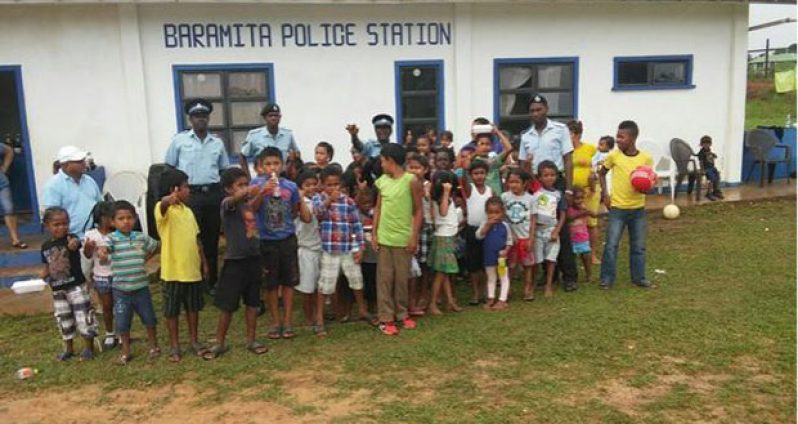THE concept of Police Operation Youth Clubs came to fruition on March 24, 1977, during the tenure of then Commissioner of Police, Mr. Henry Fraser, DSS, DSM, CPM.The concept was that it was a way of channelling the youths in productive and developmental activities that may lead them away from crime, and at the same time assist in improving the Force’s image and fostering better police-community relations.
Through the Youth Clubs, it was expected that there would be the building of positive attitudes towards the Police Force and other responsible community officials and organisations, and the promotion of a favourable disposition between the police and the public.
The Force’s Operation Youth Clubs was coordinated by a Management Committee that included police ranks and civilians, and representatives from the then Department of Youth.
Youth Clubs were established in the Police Divisions, with the Alberttown Youth Club being the largest and most vibrant. It was founded by Mr. Edmund Calder, now deceased, who was a national footballer, and had a great interest in the development of youths.
CALDER’S HALL
A section of the Alberttown Police Station building was allocated for the use of the club, and this was later named “Calder’s Hall” in memory of Edmund Calder.
Following Calder’s death, then Sergeant 10735 George Vyphius, who has since retired at the rank of Assistant Commissioner, took responsibility for the Alberttown Youth Club, and was later appointed to the Management Committee as Coordinator and Secretary.
Through the commitment and positive approach of Sergeant Vyphuis, the Force’s Youth Club initiative expanded, and on February 1, 1987, the Police Majorettes, which was an all-female, uniformed group, evolved.
Though it never materialised, the aim was to have a Youth Club established in every station district alongside the Community Policing Groups.
During the tenure of Commissioner Laurie Lewis, DSS, DSM, the concept behind the Police Operation Youth Clubs was enhanced, and became an important aspect of the police community “outreach”, which is complemented by the Police Scouts.
During 2010, it was decided by the Force Administration to establish a specific Youth and Scout Office at Police Headquarters. At the time, the Police Force was under the command of the late Commissioner Henry Greene, DSS, DSM, who was very enthusiastic about the development of youths in the society.
ENHANCED FOCUS
With the launching of the Police Force’s Social Crime Prevention Programme in 2014, through the initiative of Commissioner of Police Mr. Seelall Persaud, DSM, there has been enhanced focus and interaction with youths in the communities, as the programme is aimed at empowering the youths to develop skills and moral values in order that they may become productive and meaningful contributors to society, while improving police community relations.
Police Youth Clubs are coordinated in the Police Divisions by Officers who have been appointed as Community Relations Officers, with the Divisional Commander having the overall responsibility.
The Force’s Social Crime Prevention Programme has seen a significant increase in activities and interaction involving the police and youths through vocational skills training and lifeskills in the various communities in the Police Divisions.
In addition to community outreach meetings, these activities include skills training, educational lectures, information technology, tours, youth camps, sports, craftwork, youth exhibitions, spiritual teaching, and First Aid.
The Police Force has been receiving considerable support with the implementation of its Social Crime Prevention Programme from governmental and non-governmental agencies, and the business community.
Noteworthy is that in ‘A’ Division (Georgetown/East Bank Demerara), through its Impact Albouystown Project, a number of youths have been trained in cosmetology, sewing, leather craft, welding and fabrication, information technology and block-making, with some of them now being gainfully employed.
In ‘D’ Division (West Demerara/East Bank Essequibo), under its Creating Positive Environment through Safer Communities and Partnerships Programme (C-PETS), a number of youths have been placed on apprenticeship attachments with contractors in the Division in skill areas such as welding, masonry, and the servicing of motor vehicles; and over 180 young men and women have completed a six-week programme, and are presently pursuing a one-year diploma programme at the Leonora Technical Training Centre in skills such as welding, carpentry, auto mechanics, office administration, information technology, plumbing, and electrical installation’
Presently, a total of 73 Police Youth Clubs have been established in the Policing Divisions, comprising 13 in ‘A’ Division, 20 in ‘B’ Division (Berbice), six in ‘C’ Division (East Coast Demerara), six in ‘D’ Division, 13 in ‘E’ Division (Linden/Kwakwani), seven in ‘F’ Division (Interior Locations), and eight in ‘G’ Division (Essequibo Coast and Islands).



.jpg)









